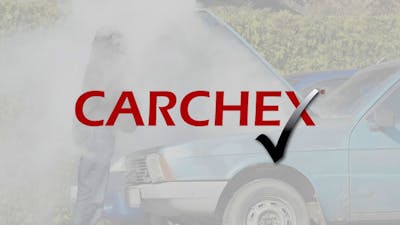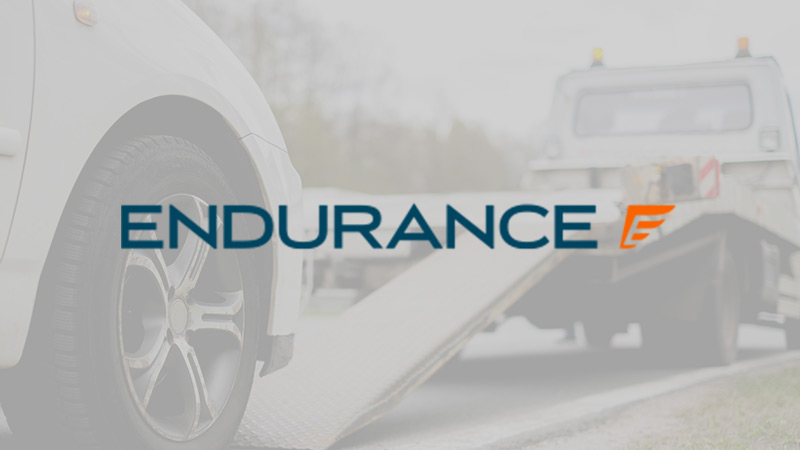Subaru Maintenance: Cost, Repairs and Schedule
There are two hidden costs of owning a Subaru vehicle that are often overlooked. Maintenance and repair. Maintenance includes scheduled work you must get done to keep your vehicle in top condition. The bulk of the maintenance costs on modern automobiles are rotations and tire replacements, brake fluid changes, brake pad and rotor changes, 12-V battery replacements, and air filter changes. With spark plugs lasting as many as 120,000 miles, timing chains no longer needing replacement, distributor caps are long gone, and no more power steering fluid to change, most cars are relatively maintenance-free these days.
Popular Warranty Providers
Subaru repairs are a different type of expense. These are unexpected and unplanned needs required to fix a vehicle that breaks when it is no longer within its warranty period. Real-world examples of common under-the-hood repairs include alternator replacements, starter motor replacements, and AC compressor replacements. Suspension components also have issues, and some models are much more susceptible to failure than others. Wheel bearing replacements, strut and shock replacements, and ball joint repairs are common repairs many cars will require.
Given time every part of your car will eventually stop working as it should. Here, we are going to ignore the end-of-life type of failures and repairs that very old, fully-depreciated cars suffer from. Things like a complete engine or transmission failure can cost as much as $5,000 and often lead to a car’s end-of-life recycling. This story will focus on the maintenance and repairs needed to keep a modern Subaru vehicle running up to and beyond 100,000 miles.
Subaru Maintenance Cost
New Subarus come with two years of included maintenance in a handful of sunbelt states, but not Northern states where the brand is most popular. Subaru calls this “Maintain the Love.” By comparison, Hyundai offers three years of included maintenance, and Honda and Toyota offer two years in all U.S. states.
Subaru is a rather high-cost of maintenance vehicle brand for a few reasons. In this overview, we will use the Forester, one of the brand's top sellers, as our example vehicle. Based on pricing we have obtained from local Subaru area dealers (see poster above), here is the cost for maintenance of a Subaru Forester over 100,000 miles. Please note that this does not include repairs.
- 100,000-mile Mechanical Maintenance (Including one brake replacement) - $4,972
- 100,000-mile Tire-replacement Cost Estimate $ 2,200 (2 sets of replacement tires)
- Total cost to maintain a Subaru Forester for 100,000 miles = $7,172
Unusual Subaru Maintenance Jobs
Subaru is an odd duck when it comes to powertrain designs. All of its vehicles except the low-volume BRZ sports coupe come standard with all-wheel drive. And its engines are also odd in that they are horizontally opposed with regard to cylinders. Subaru calls this a “boxer engine.” Though we have never seen a boxer who punches side to side.
Because of its unusual powertrain, Subaru owners can expect to perform differential fluid changes more often than they would with a conventional vehicle. Changing the spark plugs in a Subaru, something that the brand recommends every 60,000 miles, is also an adventure. The engine mounts are disconnected, and the engine is nudged up to allow the mechanic access to the plugs, which are snugly situated against the sides of the engine bay.
Most odd of all is the constantly variable transmission fluid change. To do it right, the car needs to be up on the lift and running as the Subaru-only special CVT fluid is added. Thankfully, it is not a routine job.
Subaru Forester Recommended Maintenance Schedule
| Maintenance Job | Every 5 Miles or 6 Months | Every 15K Miles | Every 30K Miles | Every 60K Miles | Every 137K Miles |
|---|
Typical Costs For Routine Maintenance Jobs
| Maintenance Job | Approximate Cost Range |
|---|
*Prices with stars were obtained from a Boston Area Subaru dealer. Other prices are estimates.
What Are “Various Inspections?”
Our chart above lists “Various Inspections & Minor Adjustments” as one of the many maintenance items required to properly maintain a vehicle. These include common sense things like a visual brake inspection, hands-on suspension component checks, visual inspection of hoses and belts, checking that coolant, transmission, and differential oil levels are at the proper setpoints, and re-torquing specific bolts on the vehicle, such as those on the propeller shaft (driveshaft). Most shops will do these things for a nominal fee. However, dealerships tend to inflate the cost of these inspections and minor adjustments at the 15K intervals. Often to the tune of hundreds of dollars.
Wear Items and Various Inspections
| Wear Item Service | Estimated Interval Miles | Budget Cost Range |
|---|
~ means approximately.
Consumable Parts Maintenance For All Vehicles
All Subaru vehicles have consumable parts that require maintenance and replacement at certain points in the vehicle’s lifespan. There is no set time for many of these, but rather, they are done when needed. Here is a quick rundown of some common items that you should make certain to budget for:
- Wiper Blades - Expect to replace wiper blades every 10,000 to 20,000 miles. You can do it yourself or pay the shop double the cost of the parts to have it done. Budget $20 to $50.
- 12-V Battery - Your car’s battery will last from three to six years on average, depending on how hot or cold your area is. Heat kills batteries, and they then pass away on a cold morning. AAA offers onsite battery replacement for most cars in most areas. Budget $200.
- Brakes - Your brakes will wear out in pairs. Front pair and rear pair. They may all coincidentally wear out at once, but that is uncommon. Budget $400 to $750 per pair. This includes rotors, pads, and minor parts, plus labor. Calipers and other brake components fail less commonly.
- Brake Fluid Changes - Most manufacturers and all shops will recommend that you change your brake fluid periodically. 30,000 miles is a typical interval. Budget about $200 for this. However, it is also often done during a brake pad and rotor replacement, so you may not need it as often as every 30,000 if you also service the brakes.
- 4-Wheel Alignment - Your suspension undergoes slight changes as your car ages. For this reason, a shop will recommend a 4-wheel alignment at certain intervals. It is also smart to do this when purchasing new tires so that the new ones will wear properly. Budget $125 for this service. It should not be needed more than every 30,000 miles unless you travel off-pavement frequently.
- Tires - Tires can wear out on their own by losing tread, being damaged, or being too old and suffering from environmental degradation. Budget for tires on a typical mainstream vehicle every 40,000 to 50,000 miles or so, and more frequently for EVs and sporty vehicles. Your budget will depend on your vehicle, but around $1,000 is a typical cost, including the mounting, balancing, and disposal fee of your old tires. To maximize the lifespan of your tires, always keep them properly inflated and rotate them according to Subaru’s suggested interval.
- Belts and Hoses - The accessory belt in your engine and the hoses that carry coolant and other fluids don’t have specific replacement intervals, but they do wear. Expect to replace the belts and hoses in your vehicle at least once every 100K miles. Prices vary according to the vehicle and the needed part. Budget $300 per vehicle per 100K usage.
- Timing Belts - A very critical part of some engines is a rubber/composite engine valve timing belt. This belt typically lasts between 70K and 90K miles or about 7 to 9 years. Replacement is costly and includes a water pump change in most vehicles. Budget $750 to $1,000 for this once every 100K service. Note that many vehicles use a chain instead, so your vehicle may not have this belt. Timing chains are designed to last the life of the vehicle and save you money.
- Transmission Fluid Changes - Most Subaru vehicles delivered over the past decade were equipped with a constantly variable automatic transmission. Older models may have a conventional automatic, and a tiny handful have manual transmissions. Each has its own needs, and each Subaru transmission has its own schedule for service and fluid replacements. Consult your manual. Our Subaru dealer in Metro Boston told us that they do not change CVT fluid until 137,500 miles. If your vehicle does require a transmission fluid change, budget $450 for this service.
Common Vehicle Repair Examples
Many components that are designed to last the life of a vehicle don’t. Our chart below includes some commonly repaired and replaced parts of modern vehicles. These should only be a once-per-ownership event. If you find that your vehicle requires multiple repairs of the same type, it may be time to look for a new car.
| Common Repair Type | Approximate Cost (varies by make and model) |
|---|
Should I Buy a Prepaid Subaru Maintenance Plan?
Subaru models have a history of low incidence but very high consequence defects. Many Subaru models on the road today are covered by extended warranties as the result of class action lawsuits successfully won by Subaru owners. Problems like oil consumption and failed transmissions are very expensive to deal with.
If you buy a used Subaru model and wish to purchase an extended warranty to cover unexpected repairs, be certain that every maintenance job in the schedule has been performed and that you have a receipt for the work. Otherwise, your extended warranty provider may decline a future claim.
Related Car Talk Story: Used Subarus– Buy This One, Not That One
Is a Subaru Extended Warranty Worth It?
Given Subaru’s track record, it is a brand that we would suggest may benefit from an extended warranty plan if you plan to own it outside of its 5-year, 60,000-mile powertrain warranty. One or two large repairs, such as the alternator our Forester needed just a few months after the comprehensive warranty expired, will pay back much of the cost of the warranty. Our suggestion is to get a warranty that covers as much as possible.
Dive Deeper With This Car Talk Story: Subaru Extended Warranty in 2024: Is It Worth It?
How Much Does a Prepaid Subaru Maintenance Plan Cost?
As we mentioned above, a handful of sunbelt Subaru dealers offer an included maintenance program for the first two years of ownership. None of the states where Subarus are most popular have this offering.
We phoned a Boston-area Subaru Dealer and asked for the cost of a Subaru prepaid maintenance program. This program is usable at any Subaru dealer. The prices include oil changes, tire rotations, and simple visual inspections only.
- 2-Years or 30,000 miles of coverage = $885
- 3-Years or 36,000 miles of coverage = $1,010
- 3-Years or 36,000 miles of coverage = $1,090
The Subaru dealer we spoke with told us that Subaru prepaid maintenance plans are popular with shoppers who opt to lease their Subaru.
Common Subaru Problems and Repairs
Subaru is a brand that has seen its fair share of common problems. Older Subarus suffered from head gasket failure. So many Subarus presently in service have oil consumption and CVT-related problems that class action lawsuits resulted in extended warranties for the ailments. Short battery life and alternator failures are also issues that many owners have reported.
Subaru reliability varies by model. The top-selling Forester earns a Recommended stamp by Consumer Reports. The model has had a four out of five reliability rating since 2018. The Crosstrek earns the Recommended stamp, but the Outback does not.
Our Recommendations
If you want a Subaru, buy one. Subarus are fantastic vehicles that earn high satisfaction scores from owners. In the Northeast, where Car Talk is based, the brand has an almost cult-like following. It is not uncommon to pull into a diner in New Hampshire or Vermont and see that half or more of the vehicles parked out front are Subarus sporting snow or all-terrain tires. There is simply no better brand for winter weather.
Ensure that you perform all of the recommended maintenance, and consider an extended warranty if you will have trouble managing a high-cost repair.
We will make a very rare suggestion here as well. If you plan to have the spark plugs or CVT fluid changed, bite the bullet and pay the local dealer to do that work rather than try to find the lowest cost you can. In a Subaru, the way this work is performed is unusual, and trusting a discount repair chain or a local shop may not be your best path to a good outcome. Your local Subaru dealer has the double-secret list of instructions and the special tools to do the job right the first time. As well as a team that does it all day, every day.
Our Methodology For Best Warranty Providers
Car Talk has spent the last two years diving deeply into the warranties industry for the benefit of our readership and long-time listeners. Our process for deciding on the best warranty companies is exceptionally thorough, involving in-depth research and our unique secret shopper initiative. We compiled over 50 data points across all reviewed companies to refine and inform our selection process. Car Talk reviewed the following important criteria for each company:
- Consumer Satisfaction: Cross-referencing multiple trusted resources to pull our fair and balanced customer reviews.
- Cost: Utilizing our secret shopper initiative, we got comparable quotes across all companies so we can validly compare pricing.
- Coverage and Offerings: Our research team delved into the coverage and offerings for each company, comparing what is available, including extras and discounts.
- Official Ratings: We consulted a wide range of verified review sites to extrapolate a ratings score for each.
Read more on the Best Warranty Companies in the industry here.










